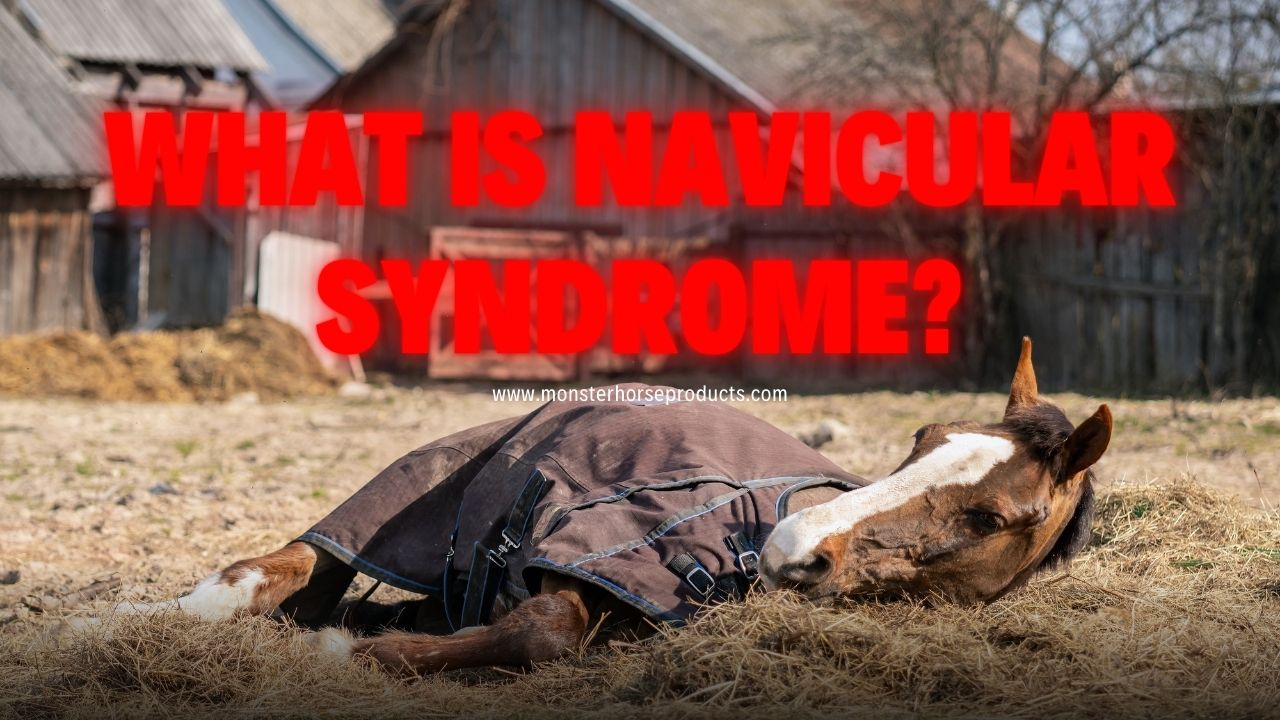Navicular Syndrome in Horses and Treatment
Navicular syndrome is a degenerative condition affecting the navicular bone and its associated structures within a horse’s hoof. It is a leading cause of chronic forelimb lameness, particularly in performance horses. While historically referred to as “navicular disease,” the term “navicular syndrome” is now more commonly used, as it encompasses a broader range of issues affecting the navicular region. Understanding its causes, signs, and treatment options is crucial for managing affected horses and keeping them comfortable.
What is Navicular Syndrome?
Navicular syndrome involves pain and inflammation in the navicular apparatus, which includes the navicular bone, navicular bursa, deep digital flexor tendon (DDFT), and surrounding ligaments. Over time, changes to these structures can lead to persistent lameness and reduced performance.
Causes of Navicular Syndrome
The exact cause of navicular syndrome varies, but contributing factors include:
-
Poor Hoof Conformation – Horses with long toes and low heels or upright, boxy hooves are more prone to navicular issues due to altered weight distribution and increased stress on the navicular bone.
-
Excessive Concussion – Hard or repetitive impact, such as working on hard surfaces or frequent jumping, increases stress on the navicular region.
-
Genetic Predisposition – Some breeds, including Quarter Horses, Thoroughbreds, and Warmbloods, have a higher risk due to their hoof structure and conformation.
-
Reduced Blood Flow – Impaired circulation in the navicular region can lead to bone degeneration and damage.
-
Chronic Strain and Inflammation – Repetitive stress on the deep digital flexor tendon as it passes over the navicular bone can lead to irritation, inflammation, and eventual structural changes.
Signs and Symptoms of Navicular Syndrome
Horses with navicular syndrome typically show:
-
Intermittent lameness that worsens over time, often affecting both front feet but sometimes more severely in one hoof.
-
Shortened, choppy stride, particularly on hard surfaces.
-
Lameness that improves with rest but returns with work.
-
Frequent stumbling or tripping.
-
Reluctance to turn sharply or work on uneven ground.
-
Toe-first landing, avoiding pressure on the heels.
Diagnosing Navicular Syndrome
Diagnosing navicular syndrome requires a thorough examination by a veterinarian, including:
-
Physical Exam & Hoof Testing – Applying pressure to the frog and heel area may elicit a pain response.
-
Lameness Examination – Evaluating movement on different surfaces and during flexion tests.
-
Diagnostic Nerve Blocks – Injecting a local anesthetic near the palmar digital nerve can temporarily relieve pain in the navicular region, confirming its involvement.
-
Radiographs (X-rays) – Imaging can reveal bone remodeling, cysts, or degeneration of the navicular bone.
-
MRI or Ultrasound – More advanced imaging can detect soft tissue damage to the deep digital flexor tendon, navicular bursa, and associated ligaments.

Treatment Options for Navicular Syndrome
While navicular syndrome cannot be completely cured, management strategies focus on reducing pain, improving hoof mechanics, and slowing disease progression.
1. Corrective Shoeing & Hoof Care
Proper trimming and shoeing can help redistribute weight and reduce strain on the navicular bone. Key strategies include:
-
Shortening toe length to improve breakover.
-
Raising heel height (if needed) to reduce pressure on the deep digital flexor tendon.
-
Using therapeutic shoes such as egg-bar or wedge shoes to provide support.
-
Padding or shock-absorbing materials to reduce concussion.
2. Medications & Pain Management
-
Non-Steroidal Anti-Inflammatory Drugs (NSAIDs) like phenylbutazone or firocoxib help control pain and inflammation.
-
Isoxsuprine or Pentoxifylline may be prescribed to improve blood circulation to the navicular region.
-
Steroid Injections into the navicular bursa can provide temporary pain relief.
-
Bisphosphonates (e.g., Tildren, Osphos) can help slow bone degeneration.
3. Exercise & Lifestyle Adjustments
-
Controlled exercise programs help maintain circulation and prevent stiffness.
-
Avoiding hard surfaces reduces excessive concussion.
-
Regular turnout in soft footing can promote natural movement and comfort.
4. Advanced Therapies
-
Shockwave Therapy may reduce pain and improve circulation.
-
Regenerative Medicine (such as platelet-rich plasma or stem cell therapy) may help repair soft tissue damage.
-
Surgical Options (such as a palmar digital neurectomy) may be considered in severe cases but come with long-term risks.
Prognosis and Long-Term Outlook
With proper management, many horses with navicular syndrome can continue working comfortably, though they may require modifications to their workload and ongoing treatment. Regular monitoring, early intervention, and appropriate hoof care are key to keeping affected horses comfortable and sound.
If you suspect your horse has navicular syndrome, consult your veterinarian and farrier to develop a customized management plan. Early diagnosis and intervention can make a significant difference in long-term hoof health and overall performance.
